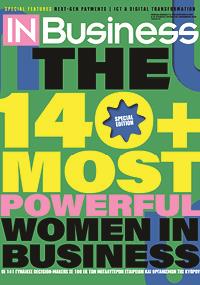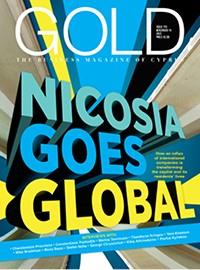In less than a decade, SayGames has rewritten the rules of hypercasual and hybrid play. From its hubs in Limassol, Paphos and Warsaw, a team of more than 200 has launched over 150 titles and registered an extraordinary seven billion downloads.
Here, SayGames’ co-founders — CEO Yegor Vaikhanski and CTO Andrei Sokal — joined by COO Denis Vaikhanski, recount the company’s ascent and its bold pivot to hybrid monetisation, while looking with genuine excitement to a future where GenAI meets craft and innovation advances hand-in-hand with player wellbeing.
Pictured above, left to right, are Denis Vaikhanski, Andrei Sokal and Yegor Vaikhanski.
Since its foundation in 2017, SayGames has grown impressively fast and seen more than seven billion downloads of over 150 games. What’s behind these remarkable figures?
Andrei Sokal: When hypercasual – simple, pick-up-and-play mobile games with short sessions, monetised mostly by ads – took off, we stayed ahead thanks to a small team and a strong in-house platform that let us acquire players efficiently. From day one, we were technology- and data-driven – my engineering team and I built tools that help talented developers take great games to huge audiences. Smart tech and good products gave us a solid base to scale.
Yegor Vaikhanski: Profitability was a focus from the start: we calculated projected per player revenue, created bold, memorable games and closely tracked performance. This mix of strong, high-quality games and a well-built publishing platform helped us break into the top ranks as the market boomed. As we grew, long-term partnerships and ongoing product and tech development taught us how to build and scale large hybrid projects.
What prompted your decision to establish a presence in Cyprus?
Andrei Sokal: Cyprus simply felt right, thanks to its great climate and community, business-friendly environment and fast-growing tech-and-games ecosystem. When we chose to relocate, we wanted more than just a place to register a company – we wanted to be somewhere our team and their families could call home. The legal and tax framework is supportive, relocation was straightforward and the quality of life is high. We opened our Limassol office in 2020 and added Paphos in 2022. Cyprus brings all of this together, the people are wonderful and we absolutely love Cypriot cuisine!
In 2022, SayGames shifted from hypercasual to hybrid-monetisation models, resulting in a 350% increase in in-app purchase revenues. How did this transition influence your user acquisition and retention strategies and are you now thinking about strategies beyond the hybrid model?
Denis Vaikhanski: Hypercasual is a hit-driven model: small, pick-up-and-play titles with short lifespans that deliver revenue in spikes. Our first hybrid game – a deeper title monetised through both ads and in-app purchases – showed that we could change that. By building bigger games and keeping them fresh with regular updates, time-limited events and new content drops, players kept coming back more often and for longer, smoothing revenues and improving planning. Longer-lived games are also more rewarding to build and ultimately more profitable. Today, we are exploring new formats – HTML5, alternative user-acquisition channels and monetisation models – as we look for the next opportunity to expand and innovate.
The company has pledged US$30 million over three years to support hybrid-casual studios. What kind of ecosystem do you want to build and how will you ensure that this support evolves into mutual long-term success with your studio partners?
Yegor Vaikhanski: Our goal is simple: we seek out high-potential, fast-growing studios and help them build their products, teams and expertise end-to-end, from production to monetisation. Across the ecosystem, feedback loops are critical. The expertise we gain as a publisher does not sit in a silo; insights from new releases and breakout hits are codified and shared so that every team can apply them. When one studio ships a successful project or pioneers something new with our support, those lessons become common currency for all.
Denis Vaikhanski: Our system works like a continuous flow of knowledge from the studios to us and back out to all others. Our producers share their experience, open up the metrics, explain what worked for whom, suggest hypotheses to test, and guide others on ways to improve. Experiments and ideas are evaluated and refined, becoming the foundation for the next teams. One studio adapts to a concept, improves it and we then gain new data and optimise the processes further. Ultimately, this isn’t about internal competition – it’s about everyone working toward a shared success. Every new experience enriches the shared knowledge pool and spreads throughout the entire ecosystem.
My Perfect Hotel, developed by Redux.Games and supported by SayGames, has now surpassed $100 million in revenue. What were the key elements of your approach that helped turn this title into a success and how do you plan to replicate that formula with future partners?
Yegor Vaikhanski: At the outset, My Perfect Hotel was a very small project – two hotels, simple mechanics and the feel of a quick hypercasual game. Over three years it grew into a much deeper experience with dozens of hotels, more content and a long lifecycle. That journey displays what made the game successful. Two factors mattered most. First, marketing: we obsess over getting the strategy right, constantly testing new creatives and playables. It’s fast-paced – you have to identify winning ideas quickly, because marketing is such a big part of the game’s success. Every creative, every playable is a chance to see what clicks with players and drives engagement. We keep learning and iterating and that speed and precision make a real difference.
The second factor is long-term collaboration with the studio. Together we improve everything – metrics, content, monetisation – step by step. The process never stops: a small, simple game can grow into a larger, more sophisticated project through a strong, product-driven approach. Every tweak and experiment increases engagement and extends its life. Above all, great projects come from great teams. It’s not just about metrics for us – we care about the studio itself: its growth, learning and wellbeing. Games rise and fall, trends shift but trust and shared experience between developer and publisher form the bedrock of long-term success. We often tell partners: “Even if this game eventually hits its limit, we’ll build the next hit together. What matters is the relationship and what we’ve learned from each other.”
So really, it’s the mix of careful marketing, smart product strategy and a trust-based partnership that turn a game into something big and enduring – it’s never only about one launch but about a foundation that delivers results for years for both the studio and us.
How is GenAI being used to enhance game development?
Andrei Sokal: GenAI helps us work faster and more creatively: we can generate art concepts much more quickly than before. It doesn’t replace the human touch, of course, but it allows our teams to experiment with more ideas, iterate faster and focus on the parts of the game that really benefit from human creativity and expertise. We use it not only for game art but also for creating advertising materials and supporting localisations. Our engineers also rely on it in their daily work when writing code and technical documentation.
What other emerging trends in the gaming industry are you most excited about?
Denis Vaikhanski: There are a few trends that really get us excited right now. First, the rise of AI and machine learning in games – not just for development but for smarter, more adaptive player experiences. Games can now respond in real time to how someone plays, making every session feel unique. Then there’s the continued evolution of hybrid monetisation and the way games are regularly updated with new content. Players expect ongoing events and challenges, so we’re constantly thinking beyond launch day. The games that can evolve, adapt and keep players engaged over months – or even years – are the ones that really stand out. Finally, the focus on player wellbeing and responsible design is becoming central. We want to create games that are fun and engaging but also respectful of players’ time, attention and community experience. Combine all of that with cross-platform possibilities and you can see why we’re so excited about the future – these trends aren’t just technological; they’re shaping the way we create meaningful, long-lasting experiences for players.
Photo by Giorgos Charal.
This Special Feature first appeared in the September edition of GOLD magazine. Click here to view it.









